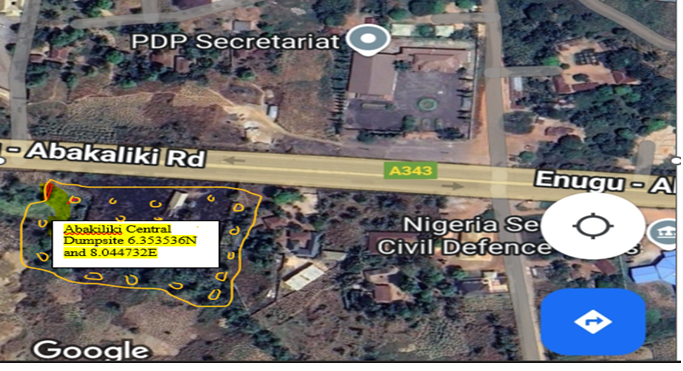Health risk assessment due to environmental radioactivity and heavy metal contamination at the central solid waste dumpsite in Ebonyi State, Nigeria
Keywords:
Heavy Metal, Environmental radioactivity, Dumpsite, Radiological hazards, Solid wasteAbstract
The study assessed the levels of radiation exposure due to environmental radioactivity and heavy metal contamination at the central solid waste dumpsite in Abakiliki, Ebonyi State and its health impact on surrounding communities. Soil samples collected from landfills/dumpsites, farms, and control sites were assessed to determine environmental radioactivity and heavy metal concentrations, and compared to the control site values. The radioactivity concentration was determined using a NaI(Ti) gamma spectrometer. The estimated radiological hazard indices from the dumpsite and farmland showed that the average values of Radium Equivalent (Req), and excess lifetime cancer risk are 146 Bq kg-1 and 1.445 x 10-3 respectively. The average concentration of heavy metals in soil samples was evaluated using an atomic absorption spectrophotometer (AAS). The concentration of heavy metals in studied samples showed that Pb > Fe > Cu > Zn > Co > Ni > Cd > Cr > Hg > As. Soil contamination was based on the geo-accumulation index (Igeo), Potential ecological risk coefficient (RI), Chronic daily take (CDI), Total carcinogenic risk index (TCRI), Total hazard quotient (THQ) and pollution load index (PLI). The average values of Igeo, CDI, TCRI, THQ and PLI for dumpsites and surrounding farms were 2.01, 207.19, 6.1 x 10-2, 2.66, 0.95 and 1.33 respectively. Generally, high concentrations of Pb and Fe were observed at the dumpsites and surrounding farmlands have potential negative health implications for the health of humans and plants around the dumpsite.

Published
How to Cite
Issue
Section
Copyright (c) 2025 E. O. Echeweozo, C. I. Nworie, A. O. Ojobeagu, P. B. Otah, I. J. Okoro

This work is licensed under a Creative Commons Attribution 4.0 International License.







